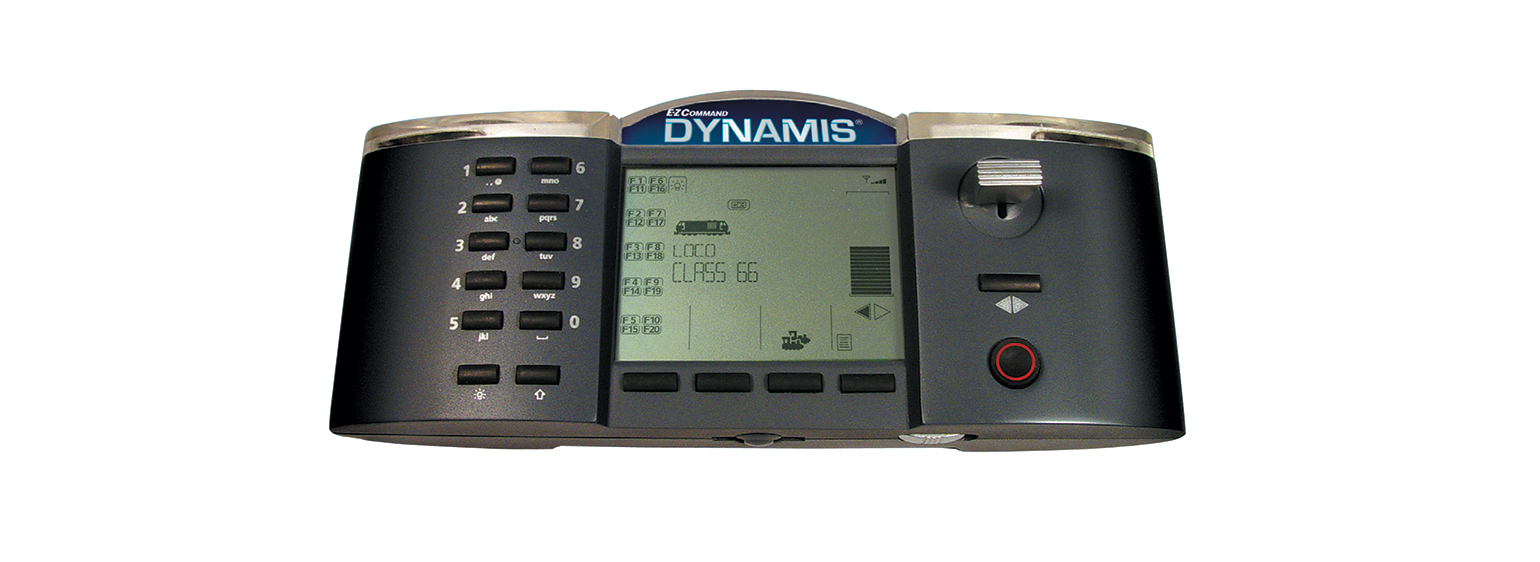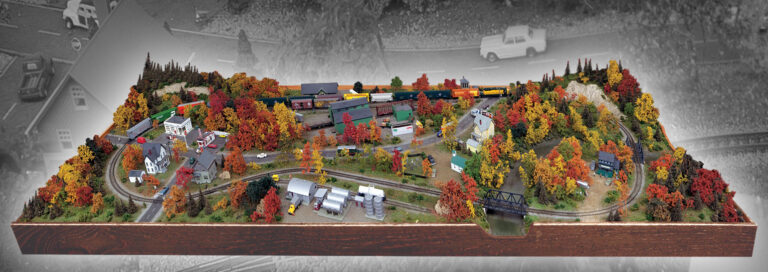Which Train Control System – Analog versus DCC
It’s probably a good time to get more technical… I’ve given you an overview of control systems, but I think you need more information to make the right decision on which control system you should use.
What we are talking about will completely transform your model trains and provide as much fun as you can ever have with this great hobby!
Analog Control Systems
An analog control system is usually the standard control system you receive when you buy a model train set. It consists of a power pack which takes the power from your power outlet and reduces it down to a safe voltage.
When this voltage is applied to the track you can adjust this voltage or reverse the polarity simply by moving the dial on the power pack. If the voltage is increased the train will speed up, while a decrease in the voltage will slow it down. By changing the polarity of the voltage the train will reverse.
The Advantages of Analog Control Systems

Figure 49
The main advantage of analog control systems is the simplicity and cost. Very little technical knowledge is required to quickly have this system up and running. The operation of your train is achieved by simply adjusting the dial on your power pack.
The Disadvantages of Analog Control Systems
If you want to have more than one train on your layout then both trains will move at the same time when you turn the dial. The only way around this is to create electrical sections in your track which are activated and deactivated by toggle switches or separate power packs.

Figure 50
This means when train 1 is in electrical section 1 of your layout you can switch off the power to that section of track and operate train 2 in electrical sections 2, 3 and 4 for example.
This gets complicated for a beginner… unless you have a good understanding of electricity.
The enthusiasts call this cab control. This is where the model train layout is divided into many electrical blocks. Each block controls one locomotive. The locomotive is operated with a cab (throttle). A bank of selector switches then connects each block.
They then take this to the next stage where they have progressive cab control. As the train moves around the track it will activate relays which switch the connection from the cab and the electrical block to the next electrical block. The previous block is then released for the next train to use.
Digital Command Control (DCC)
Your model train layout becomes a computer network. Your locomotives are like the different computers on the network. Each locomotive is fitted with a decoder which responds to the data transmitted down the track from a small processor which is your command station.

Each locomotive decoder has a specific address and only responds when instructions are sent for that address. This allows multiple trains to be run on the same electrical section of track.
Some DCC enthusiasts will talk about complex programming, digital data packets, alternating current waves and other confusing DCC information but the truth is you do not need to know any of this.
DCC is as simple as taking it out the box, plugging it in and playing with it. As you get familiar with it you may want to explore the more complex programming.
A common misconception about DCC is that it is only suitable for large complex layouts. The truth is it is a far better way of controlling even the smallest layout as it completely removes any operating constraints.
The Advantages of Digital Command Control (DCC)
The biggest advantage of DCC is the ability to drive the train in a realistic way. With analog control you are controlling the amount of voltage supplied to the track which moves the train. A higher than normal electrical resistance on the track, due to dirt or a bad joint, will sometimes stop the locomotive from moving. So, you turn the voltage up and then the locomotive suddenly speeds off and jumps the track at the first corner.
With DCC the voltage on the track is always applied at a constant level, no matter what speed the locomotive is travelling at. This means a more efficient electrical delivery system to the locomotive and a more realistic action.
DCC removes the need to have electrical sections of track, toggle switches, relays and complex wiring. The wiring is much simpler. DCC sends an instruction to the relevant locomotive which starts slowly and gently gets up to speed just like the real locomotive would.
But not only can you control the starting and stopping of the locomotive, you can control its lights, horn, brake, coupler and engine sounds, and smoke features, if they are fitted. You are now actually driving the train!
DCC can also be used to control your accessories like the town street lighting, the industrial conveyor or the switches. The uses are just about endless.
As with most computerized equipment the upgrade path is endless for DCC. While you may start by just controlling 2 trains, this can easily be upgraded to operating 10 trains with full sound and visual effects.
DCC is a world of difference away from analog controls. It provides you that total model train experience… it is so much more fun!
So are there any disadvantages?
The Disadvantages of Digital Command Control (DCC)
The price is about the only disadvantage. If you are starting from new then the price is not an issue. Instead of buying an analog controller you would buy DCC.
There is a big variety of DCC equipment on the market, and prices are coming down as the demand increases, which has the result of bringing down manufacturing costs. DCC kits range from the simple starter kits at $100 to high-level kits which can cost over a thousand dollars.
If you are converting from analog to DCC it could get expensive if you have many locomotives. Each locomotive has to have a decoder fitted which is around $20 plus about $20 to fit, unless you can install it yourself. Not all locomotives can be converted though, as some just don’t have the space to mount the decoders.
Decoders are becoming smaller and smaller. There is a limited amount of decoders on the market for z scale. Most other scales have decoders for most locomotives.
More on DCC
When looking at DCC you need to decide if you want all the equipment in one box or as separate components. Different manufacturers have different configurations.
Bachmann, Digitrax and Lenz produce DCC starter kits where the command station and power booster are in the same box. The middle of the range systems tend to come as separate units, as sometimes you may want less control but more power. It depends entirely on your own needs.
Most DCC equipment is compatible with each other. Manufacturers work to a standard which makes DCC user-friendly.
When you buy locomotives that are marked DCC ready, it means the loco has a socket which is ready for a decoder. The decoder can be bought as an extra and plugged straight in to the socket. Decoders can be bought with different functionality. A basic decoder will just operate the locomotive, while another decoder will operate the train, different sounds, lights and smoke feature.
Which DCC System Should You Buy?
There is a large variety of DCC systems for the beginner. They have their differences and are usually in the $100 to $300 range.
Buying a DCC system is like buying a car. You can research all the specifications, check which dealers close to you provide good after sales service, but you can only really decide by test driving the units.
You can do this at your local hobby shop or model train club. Model train shows are also a good place to test DCC systems and you’ll often get a better deal from the manufacturers.
Online model train forums are a great place to find people in your local area that may be willing to demonstrate their systems.




